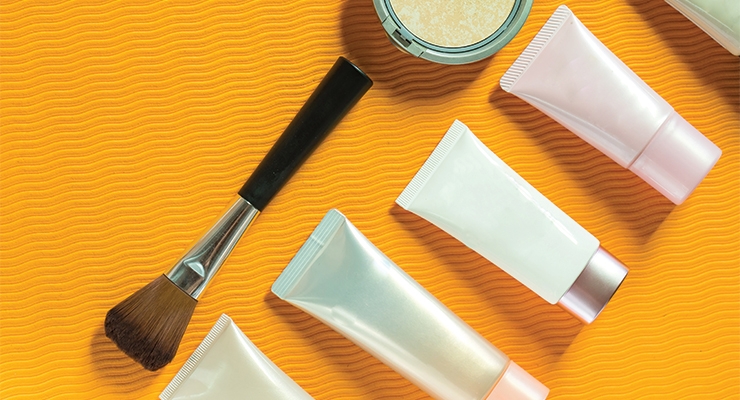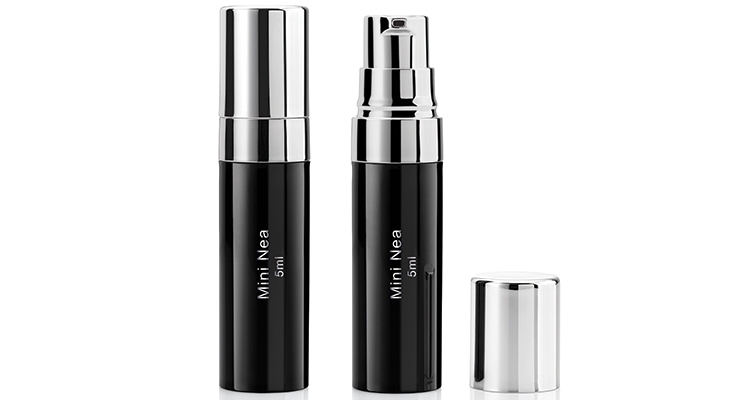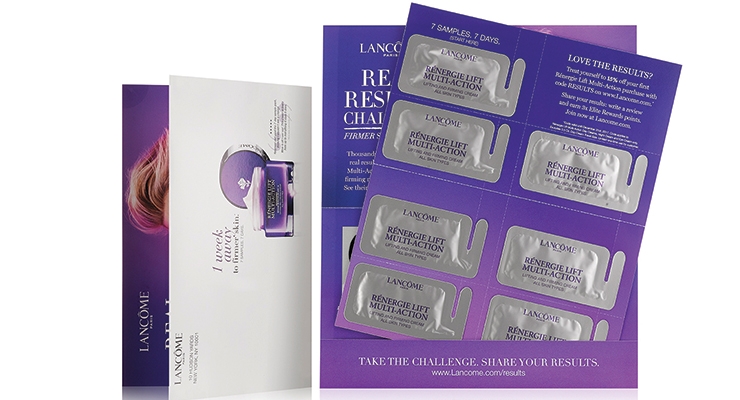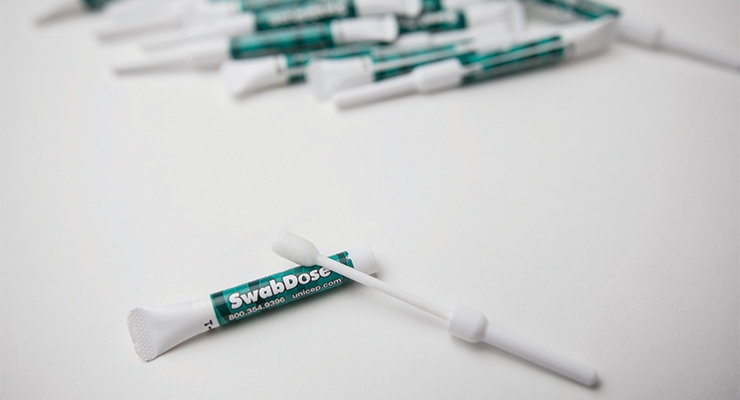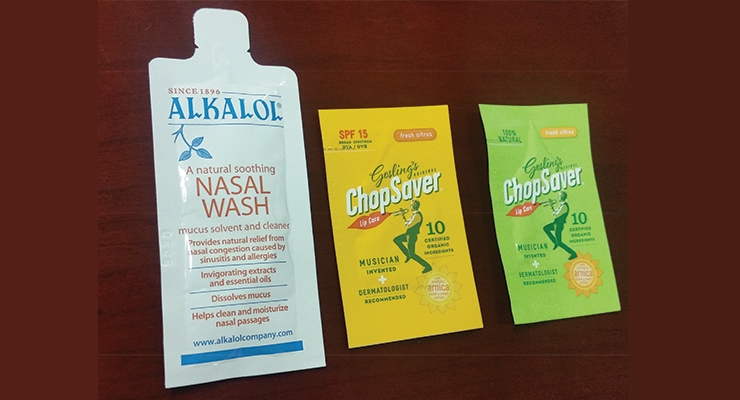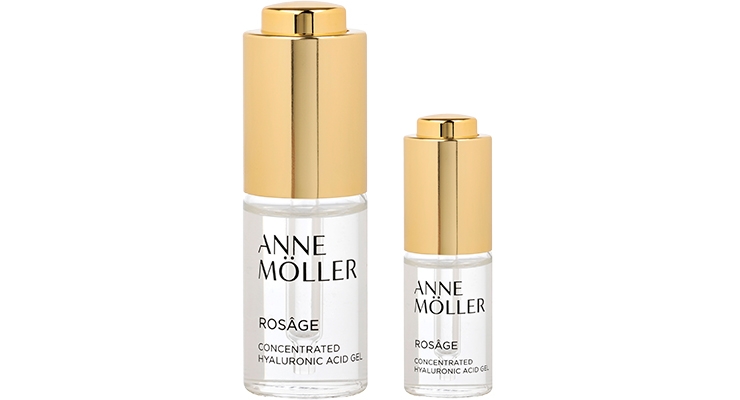Joanna Cosgrove, Contributing Editor09.01.17
The premise is simple: Sample-sized beauty and personal care products are value-added ways to impress consumers with your brands. For starters, it introduces new products to potential new consumers, boosting brand visibility. When consumers get to experience a trial-sized amount of product, a bond is instantly forged, acquainting the consumer with the brand and increasing their inclination to purchase a full-sized iteration of the product.
“The trend driving trial-sized sampling package is to establish good user experience from the start and without letting consumers feel regretful after buying a full size,” comments Canaan Chen of Taiwan-based Glaspray Engineering & Manufacturing Co. Ltd.
Sample packaging can be configured to deliver single or multiple uses of a product. Clémentine Barbet, communications project manager, Albéa, Gennevilliers, France, points to a Mediapost Sampling Survey that determined that regardless of size, sample-sized products are a major stake for brands. “Seventy-two percent of consumers consider a free sampler as a gift creating the contact between the end-user and the brand,” she says. “The functionality of a sample is to test the product before buying it. Consumers want to test the product first to be sure they have made the right choice.”
Albéa focuses on developing miniaturized pumps and components that deliver gestures similar to full-sized products, including sprays for fragrance, lotion, mini-lipsticks, mini-mascaras and mini-brushes for travel and retail. Dutch brand Uncover Skincare chose Albéa’s Néa technology platform for its Samples Kit step-by-step beauty regimen. The Néa airless platform protects sensitive and fragile formulations, and proved to be the ideal choice for Uncover Skincare’s cleanser, toner, exfoliant, moisturizer and sunscreen presentation, which is harmoniously unified by a white and pastel color scheme.
Barbet explains that the Mini Néa’s construction and technology ensure formulaic neutrality. “With a glass ball inside the engine and a spring outside the dosage chamber, the formula never comes into contact with metal,” she says. “For even more protection, it is available with a self-sealing actuator to prevent the formula from drying out.”
The Néa pump’s high suction rate is capable of dispensing highly viscous products such as sunscreen, exfoliants and makeup, and is customizable with a wide variety of finishes/coloration, silk-screening and hot stamping, and metallization of the cap, collar, actuator and bottle.
Trying Before Buying
Sampling does a great job of increasing the odds of developing brand loyalty, especially among Millennials for whom cost can be a barrier to purchase. “Millennials tend to be brand-agnostic and want to experience multiple brands and products before making a full-size product commitment,” comments Alexandra Sorensen, vice president, marketing and cosmetics business, Arcade Beauty, New York. “The mini product/single dose sample format removes the price barrier for some brands.”
Arcade recently developed a seven-day, seven-product sample for Lancôme utilizing its BeautiPod mailer. The format not only gives consumers a full week’s worth of product to experience, it also incorporates a 15% discount offer on the purchase of a full-sized product. “One of the benefits of Arcade’s BeautiPod technology is it accommodates larger fill volumes, offering a full product application,” Sorensen says. “Additionally, the sample is permanently attached to marketing material as opposed to a packette which, in order to be used, must be removed from the marketing materials.”
Unit Dose Benefits
For Spokane, WA-based Unicep, limited-use product concepts aren’t simply “sample” packaging, they’re termed unit dose. Karla Horton, marketing manager, explains that precision unit dose packaging fulfills an important niche in many HBA segments, but none more so than skin care, where multiple-step regimens can call for specific dosing of active ingredient-rich products.
“The packaging for these types of products must clearly reflect the protocol and ease of use of these routines,” she says. “Consumers don’t even need to worry about getting the right amount of product—as the manufacturers already packed it with just enough with one-time use packaging.”
Horton says that there are two primary elements driving the single-serving packaging trend. “There are consumers that are seeking fast, convenient ways to get the products that they need,” she says, adding that the uptick in travel has also favorably impacted the need for this type of packaging. “Whether it’s for vacations or one-day business trips, consumers want to pack their favorite beauty products in on-the-go formats. Business travelers typically don’t check baggage on a work trip, and with their limited liquid space they need individually packaged beauty products.”
One of Unicep’s unit dose solutions is the SwabDose, a single-use applicator that Horton says has been gaining traction in the beauty market. The SwabDose format is capable of delivering many different types of product formulas including anti-aging eye creams, cuticle care formulas and acne products. Available in two 1.5ml formats—the standard and the Modified SwabDose for viscous liquids, gels and creams—both configurations are comprised of a saturated cotton or rayon swab tip applicator that’s housed within a polypropylene tube. To initiate use, the consumer snaps open the tip and withdraws the pre-loaded swab.
Miniaturized Convenience
Smaller-sized, limited-use packaging formats are often utilized by brands to appeal to travelers in search of easily packable versions of their favorite products without adding bulk or taking up valuable carry-on space.
“Men and women are travelling more often for vacation getaways and work,” comments Michelle Garrett, sales manager at McAllen, TX-based Identipak. “In addition to sampling new products, trial-sized mini packaging also offers consumers the opportunity to travel prepared, without having to carry heavy hair product, bulky makeup containers and skin care bottles that take up a lot of room.”
Identipak recently collaborated with Lalicious to create three samples of the brand’s bubble bath range that echo the line’s bottle shapes. Created for three scents, Brown Sugar Vanilla, Sugar Kiss and Sugar Lavender, Garrett says Identipak provided the specialized film used for the three samples, and used flexo-printing on silver film to create a metallic effect in desired areas of the artwork.
“Using top-of-the-line machinery, Identipak filled the die-cut packettes three at a time, one of each scent,” she explains. “The final sample pieces are sturdy, easy to tear and beautiful; there are three colors for the scents: brown, pink, and lavender.”
In a similar vein, Arcade recently developed and produced three variations of a saleable single-dose (20ml) solution for Garnier Original Remedies hair mask formulations. Each hair mask is housed in Arcade’s “prism” technology presentation, and 30 prisms are packaged in a shelf-ready dispensing carton, also produced by Arcade Beauty.
On a trip to a local mall, Mark O’Malley, president and CEO, Paket Corp., Chicago, IL, spoke to several retailers who reported that if a product costs between $50-$100, most consumers want a sample to try before investing in it. “The higher end the product, the higher-end the sample should be,” he says, noting that it’s best when samples mirror their full-sized counterparts. “If the retail item is in a tube, the sample should be in a miniature version of the retail item, a small tube. If it’s a sample pouch, it should have the same graphics as the tube, vial or bottle.”
Darrell Van Dyke, Paket’s national sales manager, says single-use and unit-dose packaging formats, such as the PinchPouch from Paket, aren’t just convenient and easy to use, they’re sustainable and also eliminate cross contamination risks associated with multi-use containers. “Our patented PinchPouch allows the ability to close the pouch after the initial opening for another use,” he says.
“We [also] have a new Wipe pouch which allows the application of a product with the use of a wiping material [as well as a new] Coupon pouch which provides for a redeemable coupon to be attached to a pouch of product.”
The Paket pouch was a winner for two of the company’s customers, which needed the samples to have barrier properties enabling products to have a two-year shelf life. Alokalol used the format for its nasal wash formula, and ChopSaver filled the Paket pouches with lip balm.
Spain’s skin care brand Anne Möller turned to Barcelona-based Virospack to create a smaller, more portable sized iteration of its Concentrated Hyaluronic Acid Gel serum that conveyed the effectiveness and safety, affordable luxury and elegant simplicity of the brand. The serum is presented in a 15ml vial. According to Virospack’s Rosa Porras Mansilla, communications manager, the smaller transparent glass and vial format was chosen in response to the needs of modern women who demand products that are more easily transportable.
Virospack’s Company Dropper ensures precision dosing, formula intake and application. The vial is screen printed in black, as requested by the brand, which helps the package integrate with the rest of the product range. It’s capped off with a push button dropper with an elegant “gold shelf” for a luxurious touch.
Sample packaging satisfies many important needs for both beauty brands and the consumers they court. And with the broad array of sample packaging formats available to brands, chances are if there’s a product that brands want to present to prospective consumers, there’s an ideal packaging format ready to be customized to meet those needs.
Albéa’s Barbet says it best: “A sample is the ambassador of the brand: It should be able to convince the consumer and turn the trial into a sale.”
Consumers around the world can’t seem to get enough of subscription-based beauty and personal care sampling programs because there’s something special about receiving a box of picked-for-you products to try each month.
“With purchasing habits continually moving to digital, subscription services have become a new kind of beauty advisor,” says Britta Fleck, president and managing director of New York-based Glossybox. “We do the work for our subscribers; spending our energy searching the world for the most compelling beauty offerings on the market, then delivering them straight to their door.
Additionally, our community of beauty-lovers trusts us to find their next favorite products, and it’s usually something that they might never have otherwise tried.”
Glossybox originated in Berlin in March 2011 and has since grown to reach more than 350,000 people in 10 countries. In the U.S., the company has worked with prestige brands like Lancôme, Estée Lauder and Kerastase, as well as emerging indie brands such as Nudestix, Kevin Murphy and Rituals. The company has also forged partnerships with retailers spanning Bergdorf Goodman to O (the Oprah Magazine), while participating in exclusive product launches such as the exclusive OPI nail shade called “Pink Outside The Glossybox,” which was made available exclusively to Glossybox members.
Maria Haggerty is CEO of Dotcom Distribution, an Edison, NJ-based e-commerce logistics partner that helps subscription services with packaging, order fulfillment and freight management services. She says the popularity of subscription sampling programs boils down to consumers’ desire to be on top of the latest trends. “The sampling model allows them to do so, quickly and with ease.
Consumers are turning to brands such as Glossybox, Ipsy, Sephora, JustFab and Birchbox to help them cut through the clutter and deliver a curated experience for them, one that gives them the ability to try new things they most likely did not know about or would not have discovered on their own.”
With the popularity of the services at an all-time high, Haggerty offers advice to up-and-coming beauty box services to help lessen the chance that they’ll become a casualty of market over-saturation. “What these brands need to focus on is differentiation and tuning into the beauty profiles of their customers so that they can deliver products that are the best match possible,” she says, noting that in addition to focusing on delivery consistency and balancing order fulfilment costs, improving the unboxing experience is key. “That starts with the box itself,” she says. “Some of the subscription box brands that we’ve worked with here at our facility have always focused on making their box a collectable—something that their consumers will want to keep.”
Fleck agrees. “With each box we send out, we are all about delivering a memorable, one-of-a-kind experience to our subscribers, and packaging has a lot to do with that,” she says. That begins with the “purposefully designed,” keepsake Glossybox itself. “We’ve worked with top illustrators, artists and brands on gorgeous, limited-edition designs that often become a permanent accessory in our subscribers’ lives.
“Each product inside a Glossybox is as equally artful as its exterior, and is hand-picked by beauty experts who scour the world looking for the most unique offerings within beautiful, functional vessels,” she continues. “We seek products and brands that have a story to tell, and quite simply, things you want to use and have around you in your life.”
“Brands absolutely need to pay close attention to detail when it comes to the way the products are presented inside the box,” Haggerty says. “By working closely with their fulfillment partners, they can source fun and engaging materials for packaging and get creative with the marketing materials they include in each shipment.”
As consumer demand for subscription boxes matures, Haggerty says she believes the service model may shift to more “granular” subscriptions that take advantage of newly forged product interests.
“Brands have an opportunity to drive a secondary subscription business where they can provide their customers with the opportunity to select products they’ve sampled and love, and choose to have that fulfilled on a specific frequency,” she explains. “For example, a customer may fall in love with a mascara they were introduced to via their subscription, and brands can offer that product on its own. It’s a great way to drive additional revenue while still adhering to the original subscription model that brought their customers to them to begin with.”
“The trend driving trial-sized sampling package is to establish good user experience from the start and without letting consumers feel regretful after buying a full size,” comments Canaan Chen of Taiwan-based Glaspray Engineering & Manufacturing Co. Ltd.
Sample packaging can be configured to deliver single or multiple uses of a product. Clémentine Barbet, communications project manager, Albéa, Gennevilliers, France, points to a Mediapost Sampling Survey that determined that regardless of size, sample-sized products are a major stake for brands. “Seventy-two percent of consumers consider a free sampler as a gift creating the contact between the end-user and the brand,” she says. “The functionality of a sample is to test the product before buying it. Consumers want to test the product first to be sure they have made the right choice.”
Albéa focuses on developing miniaturized pumps and components that deliver gestures similar to full-sized products, including sprays for fragrance, lotion, mini-lipsticks, mini-mascaras and mini-brushes for travel and retail. Dutch brand Uncover Skincare chose Albéa’s Néa technology platform for its Samples Kit step-by-step beauty regimen. The Néa airless platform protects sensitive and fragile formulations, and proved to be the ideal choice for Uncover Skincare’s cleanser, toner, exfoliant, moisturizer and sunscreen presentation, which is harmoniously unified by a white and pastel color scheme.
Barbet explains that the Mini Néa’s construction and technology ensure formulaic neutrality. “With a glass ball inside the engine and a spring outside the dosage chamber, the formula never comes into contact with metal,” she says. “For even more protection, it is available with a self-sealing actuator to prevent the formula from drying out.”
The Néa pump’s high suction rate is capable of dispensing highly viscous products such as sunscreen, exfoliants and makeup, and is customizable with a wide variety of finishes/coloration, silk-screening and hot stamping, and metallization of the cap, collar, actuator and bottle.
Trying Before Buying
Sampling does a great job of increasing the odds of developing brand loyalty, especially among Millennials for whom cost can be a barrier to purchase. “Millennials tend to be brand-agnostic and want to experience multiple brands and products before making a full-size product commitment,” comments Alexandra Sorensen, vice president, marketing and cosmetics business, Arcade Beauty, New York. “The mini product/single dose sample format removes the price barrier for some brands.”
Arcade recently developed a seven-day, seven-product sample for Lancôme utilizing its BeautiPod mailer. The format not only gives consumers a full week’s worth of product to experience, it also incorporates a 15% discount offer on the purchase of a full-sized product. “One of the benefits of Arcade’s BeautiPod technology is it accommodates larger fill volumes, offering a full product application,” Sorensen says. “Additionally, the sample is permanently attached to marketing material as opposed to a packette which, in order to be used, must be removed from the marketing materials.”
Unit Dose Benefits
For Spokane, WA-based Unicep, limited-use product concepts aren’t simply “sample” packaging, they’re termed unit dose. Karla Horton, marketing manager, explains that precision unit dose packaging fulfills an important niche in many HBA segments, but none more so than skin care, where multiple-step regimens can call for specific dosing of active ingredient-rich products.
“The packaging for these types of products must clearly reflect the protocol and ease of use of these routines,” she says. “Consumers don’t even need to worry about getting the right amount of product—as the manufacturers already packed it with just enough with one-time use packaging.”
Horton says that there are two primary elements driving the single-serving packaging trend. “There are consumers that are seeking fast, convenient ways to get the products that they need,” she says, adding that the uptick in travel has also favorably impacted the need for this type of packaging. “Whether it’s for vacations or one-day business trips, consumers want to pack their favorite beauty products in on-the-go formats. Business travelers typically don’t check baggage on a work trip, and with their limited liquid space they need individually packaged beauty products.”
One of Unicep’s unit dose solutions is the SwabDose, a single-use applicator that Horton says has been gaining traction in the beauty market. The SwabDose format is capable of delivering many different types of product formulas including anti-aging eye creams, cuticle care formulas and acne products. Available in two 1.5ml formats—the standard and the Modified SwabDose for viscous liquids, gels and creams—both configurations are comprised of a saturated cotton or rayon swab tip applicator that’s housed within a polypropylene tube. To initiate use, the consumer snaps open the tip and withdraws the pre-loaded swab.
Miniaturized Convenience
Smaller-sized, limited-use packaging formats are often utilized by brands to appeal to travelers in search of easily packable versions of their favorite products without adding bulk or taking up valuable carry-on space.
“Men and women are travelling more often for vacation getaways and work,” comments Michelle Garrett, sales manager at McAllen, TX-based Identipak. “In addition to sampling new products, trial-sized mini packaging also offers consumers the opportunity to travel prepared, without having to carry heavy hair product, bulky makeup containers and skin care bottles that take up a lot of room.”
Identipak recently collaborated with Lalicious to create three samples of the brand’s bubble bath range that echo the line’s bottle shapes. Created for three scents, Brown Sugar Vanilla, Sugar Kiss and Sugar Lavender, Garrett says Identipak provided the specialized film used for the three samples, and used flexo-printing on silver film to create a metallic effect in desired areas of the artwork.
“Using top-of-the-line machinery, Identipak filled the die-cut packettes three at a time, one of each scent,” she explains. “The final sample pieces are sturdy, easy to tear and beautiful; there are three colors for the scents: brown, pink, and lavender.”
In a similar vein, Arcade recently developed and produced three variations of a saleable single-dose (20ml) solution for Garnier Original Remedies hair mask formulations. Each hair mask is housed in Arcade’s “prism” technology presentation, and 30 prisms are packaged in a shelf-ready dispensing carton, also produced by Arcade Beauty.
On a trip to a local mall, Mark O’Malley, president and CEO, Paket Corp., Chicago, IL, spoke to several retailers who reported that if a product costs between $50-$100, most consumers want a sample to try before investing in it. “The higher end the product, the higher-end the sample should be,” he says, noting that it’s best when samples mirror their full-sized counterparts. “If the retail item is in a tube, the sample should be in a miniature version of the retail item, a small tube. If it’s a sample pouch, it should have the same graphics as the tube, vial or bottle.”
Darrell Van Dyke, Paket’s national sales manager, says single-use and unit-dose packaging formats, such as the PinchPouch from Paket, aren’t just convenient and easy to use, they’re sustainable and also eliminate cross contamination risks associated with multi-use containers. “Our patented PinchPouch allows the ability to close the pouch after the initial opening for another use,” he says.
“We [also] have a new Wipe pouch which allows the application of a product with the use of a wiping material [as well as a new] Coupon pouch which provides for a redeemable coupon to be attached to a pouch of product.”
The Paket pouch was a winner for two of the company’s customers, which needed the samples to have barrier properties enabling products to have a two-year shelf life. Alokalol used the format for its nasal wash formula, and ChopSaver filled the Paket pouches with lip balm.
Spain’s skin care brand Anne Möller turned to Barcelona-based Virospack to create a smaller, more portable sized iteration of its Concentrated Hyaluronic Acid Gel serum that conveyed the effectiveness and safety, affordable luxury and elegant simplicity of the brand. The serum is presented in a 15ml vial. According to Virospack’s Rosa Porras Mansilla, communications manager, the smaller transparent glass and vial format was chosen in response to the needs of modern women who demand products that are more easily transportable.
Virospack’s Company Dropper ensures precision dosing, formula intake and application. The vial is screen printed in black, as requested by the brand, which helps the package integrate with the rest of the product range. It’s capped off with a push button dropper with an elegant “gold shelf” for a luxurious touch.
Sample packaging satisfies many important needs for both beauty brands and the consumers they court. And with the broad array of sample packaging formats available to brands, chances are if there’s a product that brands want to present to prospective consumers, there’s an ideal packaging format ready to be customized to meet those needs.
Albéa’s Barbet says it best: “A sample is the ambassador of the brand: It should be able to convince the consumer and turn the trial into a sale.”
Consumers around the world can’t seem to get enough of subscription-based beauty and personal care sampling programs because there’s something special about receiving a box of picked-for-you products to try each month.
“With purchasing habits continually moving to digital, subscription services have become a new kind of beauty advisor,” says Britta Fleck, president and managing director of New York-based Glossybox. “We do the work for our subscribers; spending our energy searching the world for the most compelling beauty offerings on the market, then delivering them straight to their door.
Additionally, our community of beauty-lovers trusts us to find their next favorite products, and it’s usually something that they might never have otherwise tried.”
Glossybox originated in Berlin in March 2011 and has since grown to reach more than 350,000 people in 10 countries. In the U.S., the company has worked with prestige brands like Lancôme, Estée Lauder and Kerastase, as well as emerging indie brands such as Nudestix, Kevin Murphy and Rituals. The company has also forged partnerships with retailers spanning Bergdorf Goodman to O (the Oprah Magazine), while participating in exclusive product launches such as the exclusive OPI nail shade called “Pink Outside The Glossybox,” which was made available exclusively to Glossybox members.
Maria Haggerty is CEO of Dotcom Distribution, an Edison, NJ-based e-commerce logistics partner that helps subscription services with packaging, order fulfillment and freight management services. She says the popularity of subscription sampling programs boils down to consumers’ desire to be on top of the latest trends. “The sampling model allows them to do so, quickly and with ease.
Consumers are turning to brands such as Glossybox, Ipsy, Sephora, JustFab and Birchbox to help them cut through the clutter and deliver a curated experience for them, one that gives them the ability to try new things they most likely did not know about or would not have discovered on their own.”
With the popularity of the services at an all-time high, Haggerty offers advice to up-and-coming beauty box services to help lessen the chance that they’ll become a casualty of market over-saturation. “What these brands need to focus on is differentiation and tuning into the beauty profiles of their customers so that they can deliver products that are the best match possible,” she says, noting that in addition to focusing on delivery consistency and balancing order fulfilment costs, improving the unboxing experience is key. “That starts with the box itself,” she says. “Some of the subscription box brands that we’ve worked with here at our facility have always focused on making their box a collectable—something that their consumers will want to keep.”
Fleck agrees. “With each box we send out, we are all about delivering a memorable, one-of-a-kind experience to our subscribers, and packaging has a lot to do with that,” she says. That begins with the “purposefully designed,” keepsake Glossybox itself. “We’ve worked with top illustrators, artists and brands on gorgeous, limited-edition designs that often become a permanent accessory in our subscribers’ lives.
“Each product inside a Glossybox is as equally artful as its exterior, and is hand-picked by beauty experts who scour the world looking for the most unique offerings within beautiful, functional vessels,” she continues. “We seek products and brands that have a story to tell, and quite simply, things you want to use and have around you in your life.”
“Brands absolutely need to pay close attention to detail when it comes to the way the products are presented inside the box,” Haggerty says. “By working closely with their fulfillment partners, they can source fun and engaging materials for packaging and get creative with the marketing materials they include in each shipment.”
As consumer demand for subscription boxes matures, Haggerty says she believes the service model may shift to more “granular” subscriptions that take advantage of newly forged product interests.
“Brands have an opportunity to drive a secondary subscription business where they can provide their customers with the opportunity to select products they’ve sampled and love, and choose to have that fulfilled on a specific frequency,” she explains. “For example, a customer may fall in love with a mascara they were introduced to via their subscription, and brands can offer that product on its own. It’s a great way to drive additional revenue while still adhering to the original subscription model that brought their customers to them to begin with.”

